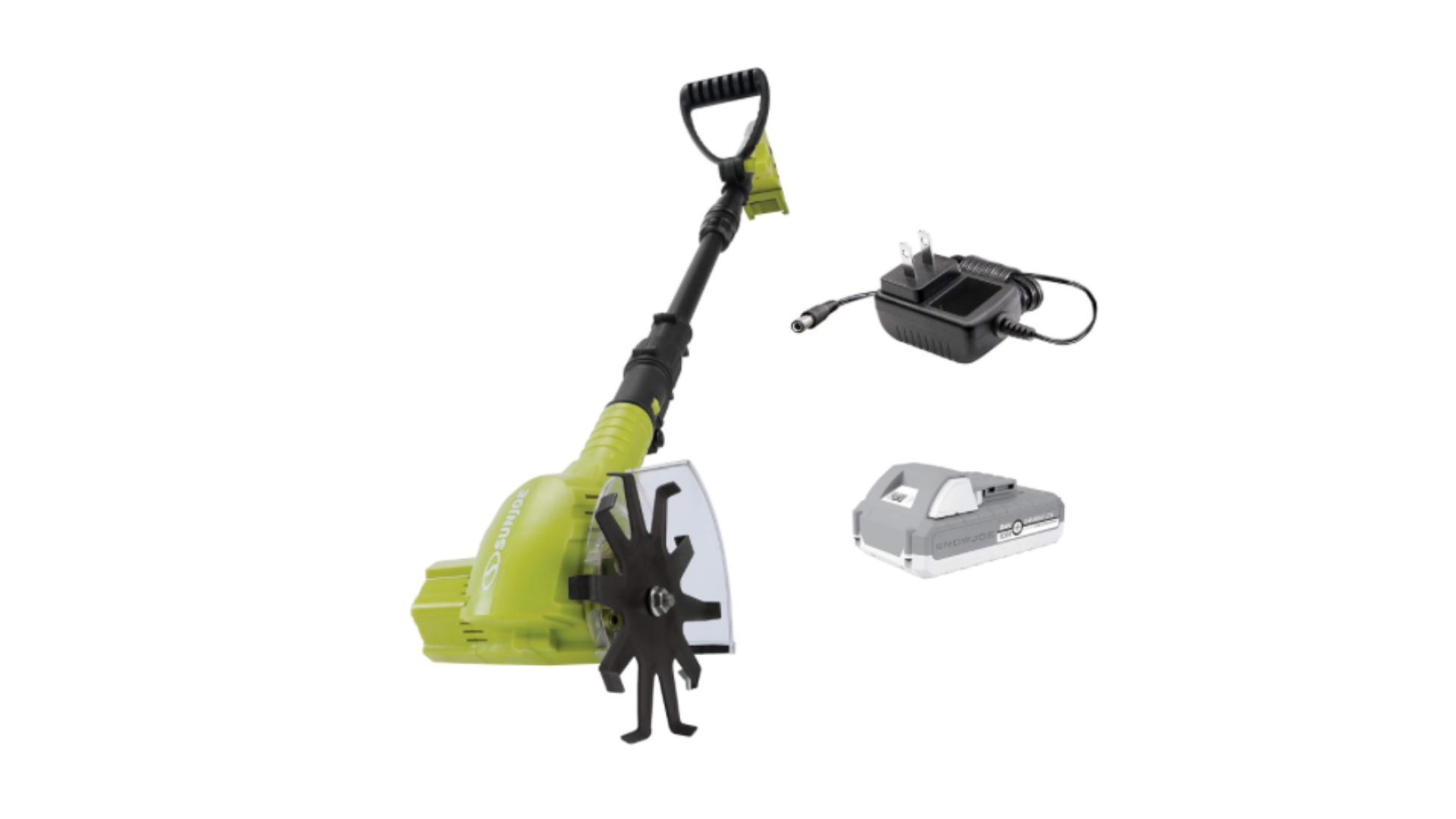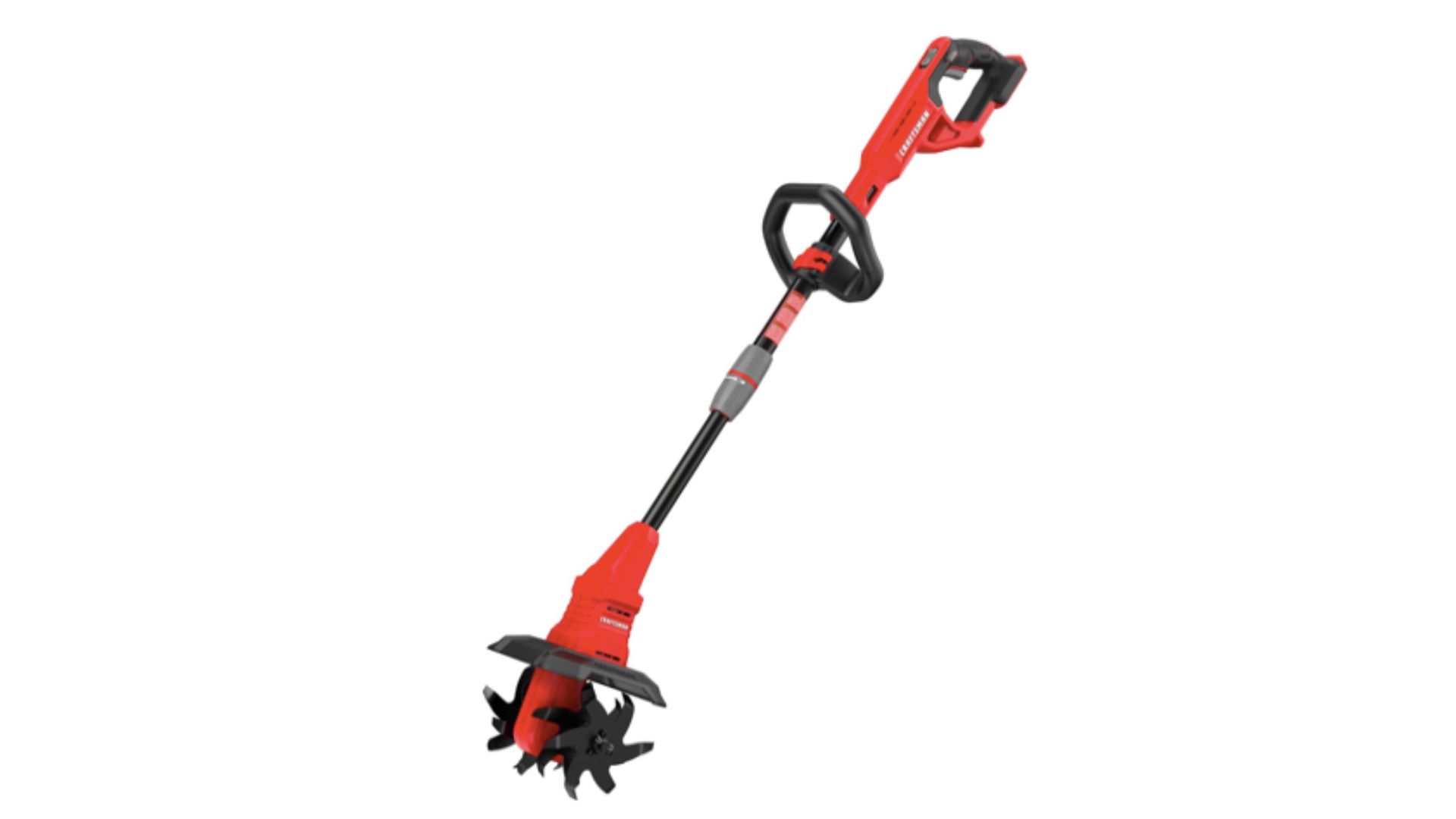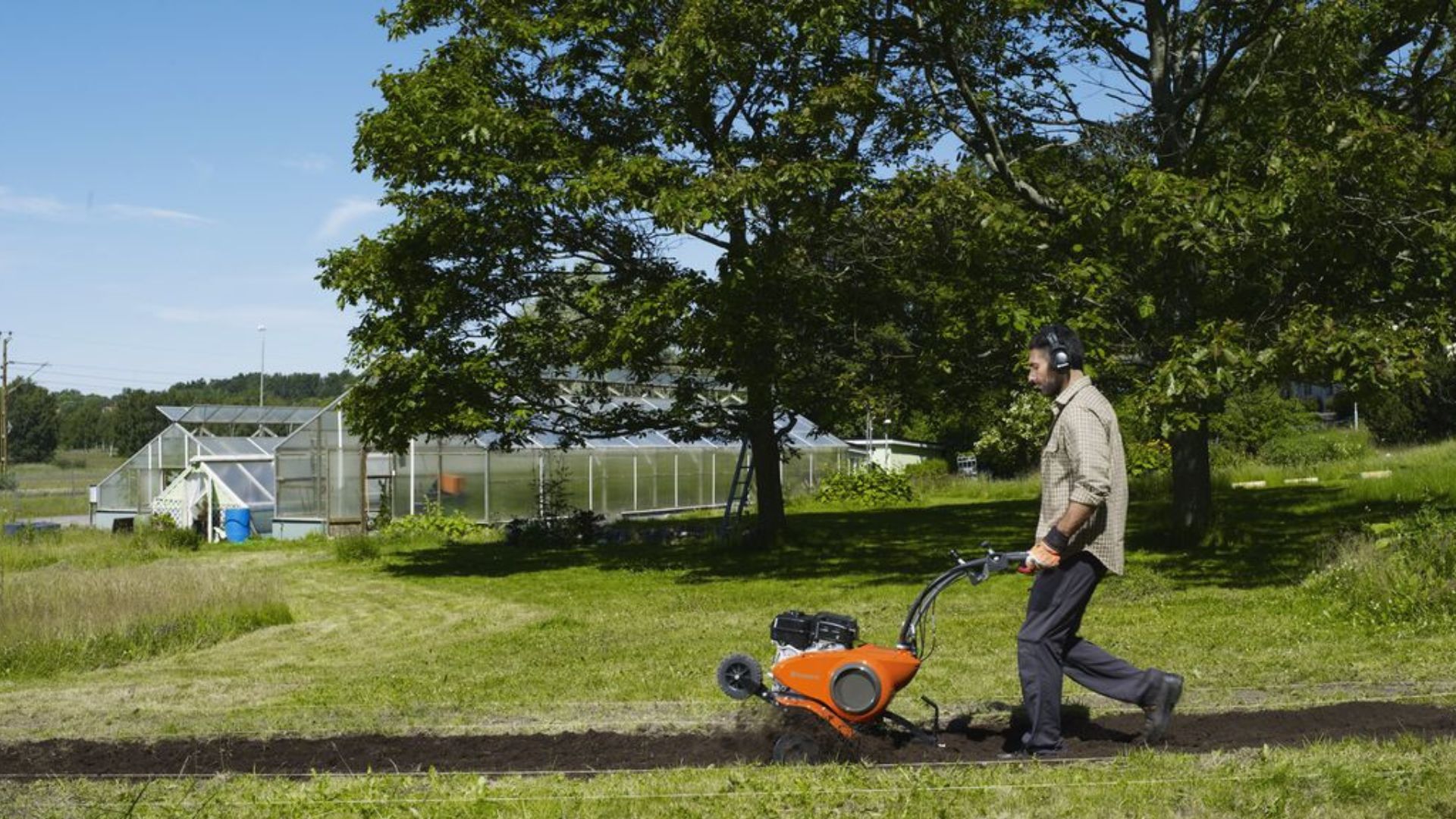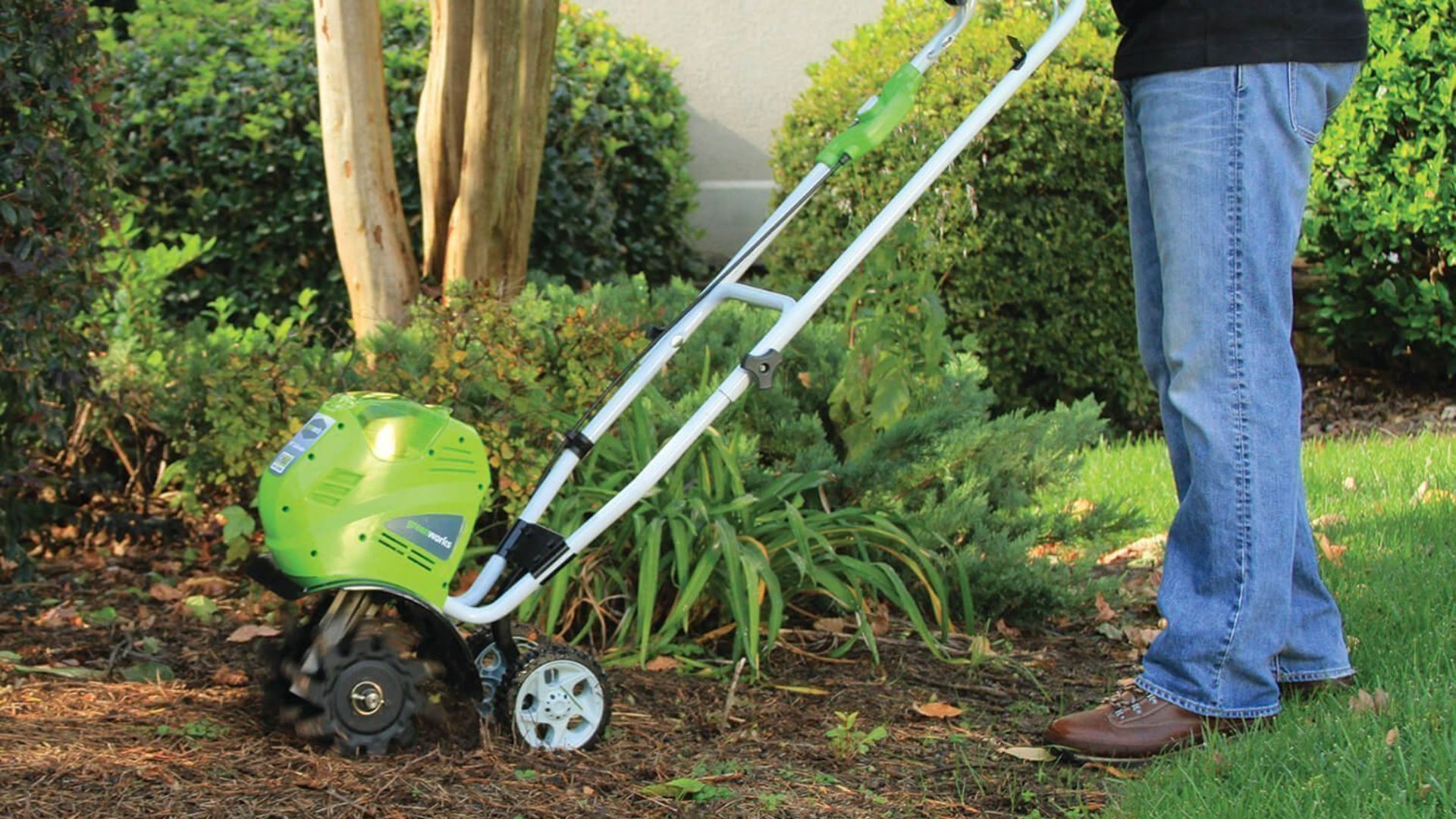Cultivator vs tiller: what's the best tool for your soil?
How to choose the perfect garden tool for your soil.

Price: $89.51
Power source: Battery
Dimensions: 6.5D x 7.28W x 45H inches
Weight: 4.5lbs
The Sun Joe TJW24C cordless cultivator is a durable and versatile gardening tool that is both lightweight and fairly powerful. With a 250W motor and 10 tines to easily mix and break up soil, it has a single wheel design for cultivating in tight spaces or wedding. It has up to 60 minutes run time.
Pros
- Compact and lightweight
- 60 minute run time
- Cordless
Cons
- Not strong enough for big projects
- Unsuitable for heavy clay or hard soil
- Too small for large gardens

Price: $129.99
Power source: Battery
Dimensions: 35.43 x 10.7 x 11.62 inches
Weight: 14.97 lbs
The Craftsman V20 CMCTL320B tiller is a lightweight and well designed cordless gardening tool that comes with a unique speed selection switch. It's powerful enough for small gardens but would struggle with bigger jobs. Only 50 minute runtime and battery and charger are not included.
Pros
- 8 inch tilling width & 6.5" depth
- Good quality
- Speed selection switch
Cons
- Only 50 minute runtime
- Not powerful enough for big yards
- Battery and charger sold separately
Cultivator vs tiller: what's the best gardening tool for your soil? Put simply, it will depend on several factors, including the size of your yard and what you need to do in it.
Cultivators are smaller and easier to maneuver than tillers, and they are also less powerful, so they work well for day-to-day gardening jobs like mixing up soil and fertilizer. The best tillers on the other hand are bigger and meatier, and make light work of deep digging and breaking up hard earth.
But which is the best gardening tool for you?
In our cultivator vs tiller guide we take a look at the key differences - from price, design, features, power and size - to help you make an informed decision before you invest. Read on to find out more about what these two gardening tools do and which one is right for you. And once you've cultivated the perfect lawn, determine when the best time to mow the lawn is to keep it looking healthy.
Cultivator vs tiller: What's the difference?
While both cultivators and tillers are garden tools designed to help break up soil and get it ready for planting, there are some key differences - mainly size and power.
Cultivators are smaller than tillers, they are less powerful and they don't till the soil as deeply. By their nature, they tend to be better for mixing already loosened earth, especially when using compost or fertilizer.
Tillers on the other hand are best for breaking up harder or even rocky ground, for example, when preparing an area to sow seeds.
Sign up to receive the latest news, reviews, buying guides and deals direct to your inbox
Cultivator vs tiller: Price
A cultivator is a relatively lightweight garden tool that loosens up the top layer of soil, usually up to six inches deep. They are portable and easy to store, with prices ranging from $50 to $400.
By contrast, a tiller can penetrate far deeper into the soil, usually up to 10 inches. They are more powerful than cultivators but also a lot heavier, so harder to move around and you'll need some place to store them. Prices start from $200 and go up to $2,000.
Verdict: Cultivators are more affordable than tillers but they are only really suitable for smaller projects, like fixing patchy grass. Tillers are more expensive but also more powerful and able to take on meatier jobs.

Cultivator vs tiller: Design & Features
Ideal for small projects, like aerating soil around plants with complex root systems, weeding or adding fertilizer into the top layer of soil, cultivators are more like a garden hoe with a motor. They are designed to grind the soil into a very fine texture, making them a great choice for preparing to sow grass seed.
Tillers, on the other hand, are a bit like a shovel or mattock, and are best suited to larger projects that need some serious digging power. They are particularly good for getting heavy clay fertilizers into deeper soil, or if you need to dig a trench for irrigation, preparing soil for figuring out how to sow grass seed and aerating crop soil. They also have a wider working width than cultivators.
Depending on the project, you can use a tiller with rear or front tines. As the names suggest, rear tine tillers have rotating prongs at the back, while the latter has them at the front. Rear tine tillers are best suited for breaking up really hard and/or rocky soil while front tine tillers work better on slightly looser ground.
Verdict: Cultivators are lightweight and portable, and designed for already loosened soil, and for working around plants. Because the tines are built to fit into tight spaces, they do not dig aggressively into root zones.
By contrast, tillers are big and bulky, are are designed for digging deeply into hard soil as part of the first stage of bed preparation. So which tool you choose will depend on the size of your yard and what you need to do to it.
Cultivator vs tiller: Power & Size
As we've heard, cultivators are mainly used for preparing an existing garden bed, while a tiller has the size and power to create new beds.
Cultivators are smaller, but less powerful than tillers - which are strong enough to kick out large stones and break up stubborn clods without breaking a sweat. But if it's delicate work you need to do around existing plants and complex root systems, a cultivator has the lighter touch. They are also great for weed removal without mashing up the root zone. Because they are smaller and lighter they are easier to move around and don't need so much space to store as a tiller would.
Tillers are bigger and more powerful than cultivators, so they are ideal for difficult and deep digging projects. They can also cover more ground because of their size. Many machines are self-propelling, making the job easier. Some also have customizable features that make light work of digging.
Both cultivators and tillers come in gas, electric, cordless and corded models. As you'd expect, gas cultivators and tillers, like the Wuzstar 52CC gasoline engine mini single-cylinder tiller at Walmart, are more powerful, but tend to be noisier and heavier. Electric machines, like the Earthwise TC70125 electric cultivator at Amazon, are quieter and more lightweight, but might have less power when it comes to getting the job done.
Verdict: Cultivators are small and lightweight making them more suited to smaller jobs that need a light touch. Tillers are big and have strong motors so they are the ideal choice for big projects that need some power and strength.

Cultivator vs tiller: Our verdict
A cultivator and tiller vary significantly in price, size and power, and the former is ideal for smaller yards while the latter is best suited to larger projects and spaces.
If you're on a budget, have a small garden and want to loosen up existing soil then a cultivator will be your best tool for the job. They are lightweight and easy to move around and store.
If you want to plant a new lawn, prepare soil for grass, need to aerate the earth or dig a trench for irrigation, you should use a tiller. However they are more expensive, bigger and tend to be heavy, so you'll need the space to house it safely.
Cultivator vs tiller: FAQs
Is a cultivator good for weeding?
Because cultivators typically have smaller prongs or tines compared with tillers, they are suitable for removing shallow level weeds without disturbing the deeper layers of soil. But you will still need to have a gentle touch in order not to damage neighbouring plants. Hand-held versions are better for small areas when working close to and around plants.
Can you use a cultivator as a tiller?
Not really! Cultivators and tillers are not interchangeable and they don't have the same power capabilities. A cultivator isn't strong enough to loosen up hard soil in the same way as a tiller. Using a cultivator in place of a tiller would be a bit like using a garden hoe instead of a shovel. It will move some of the soil, but can't get deep down to the same level as a tiller.
Is a cultivator the same as a rotavator?
No, they are similar but not the same.
Also called a rotary tiller or power tiller, rotavators are used for jobs that need deeper digging and their blades are more powerful so that they can really get into the grass and soil. The distinguishing feature of a rotavator is that it has two wheels and rear tines which are covered to protect them from flying soil.
Cultivators on the other hand are less powerful, more lightweight and designed for small garden jobs, such as loosening soil for plants and flower beds.
Maddy has been a writer and editor for 25 years, and has worked for some of the UK's bestselling newspapers and women’s magazines, including Marie Claire, The Sunday Times and Women's Health. Maddy is also a fully qualified Level 3 Personal Trainer, specializing in helping busy women over 40 navigate menopause.

